ENVIRONMENT, ECOLOGY AND CLIMATE CHANGE
1. DEVELOPMENT OF GREAT NICOBAR STRATEGIC IMPERATIVE AND ECOLOGICAL CONCERNS
THE CONTEXT: Ministry of Environment, Forest and Climate Change gave environmental clearance for the ambitious Rs 72,000 crore development project on the strategically important Great Nicobar Island.
THE EXPLANATION:
- A greenfield city has been proposed, including an International Container Trans-shipment Terminal (ICTT), a greenfield international airport, a power plant.
- The port will be controlled by the Indian Navy, while the airport will have dual military-civilian functions and will cater to tourism as well.
- A total 166.1 sq km along the southeastern and southern coasts of the island have been identified for project along a coastal strip of width between 2 km and 4 km.
- Some 130 sq km of forests have been sanctioned for diversion, and 9.64 lakh trees are likely to be felled.
SIGNIFICANCE: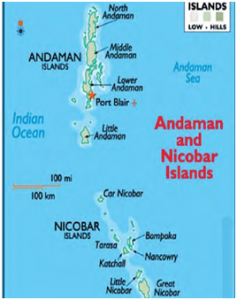
- Great Nicobar is the southernmost island of the Andaman and Nicobar Islands.
- The Andaman and Nicobar Islands are a cluster of about 836 islands in the eastern Bay of Bengal.
- The two groups of which are separated by the 150-km wide Ten Degree Channel.
- The Andaman Islands lie to the north of the channel, and the Nicobar Islands to the south.
- Indira Point on the southern tip of Great Nicobar Island is India’s southernmost point, less than 150 km from the northernmost island of the Indonesian archipelago.
Ecosystem
- The Great Nicobar Island has tropical wet evergreen forests, mountain ranges reaching almost 650 m above sea level, and coastal plains.
- The Island has two national parks (Campbell Bay National Park &Galathea National Park) and a biosphere reserve.
- Many endangered species are found at the Island. The leatherback sea turtle is the island’s flagship species.
Tribes of Nicobar
- Great Nicobar is home to the Shompen and Nicobarese tribal peoples.
- The Shompen are hunter-gatherers who depend on forest and marine resources for sustenance.
- The Nicobarese, who lived along the west coast of the island were mostly relocated after the 2004 tsunami.
- An estimated 237 Shompen and 1,094 Nicobarese individuals now live in a 751 sq km tribal reserve, some 84 sq km of which is proposed to be de-notified.
Why government is keen to develop this Island?
Economic reasons
- The government’s greater goal is to leverage the locational advantage of the island for economic and strategic reasons.
- Great Nicobar is equidistant from Colombo to the southwest and Port Klang and Singapore to the southeast.
- It is positioned close to the East-West international shipping corridor, through which a very large part of the world’s shipping trade passes.
- The proposed ICTT can potentially become a hub for cargo ships travelling on this route.
- As per the NITI Aayog report, the proposed port will allow Great Nicobar to participate in the regional and global maritime economy by becoming a major player in cargo transhipment.
Strategic & Security reasons
- The proposal to develop Great Nicobar was first floated in the 1970s, and its importance for national security and consolidation of the Indian Ocean Region has been repeatedly underlined.
- Increasing Chinese assertion in the Bay of Bengal and the Indo-Pacific has added great urgency to this imperative in recent years.
Steps taken by the government to address these concerns
- The Zoological Survey of India is currently in the process of assessing how much of the reef will have to be relocated for the project.
- India has successfully translocated a coral reef from the Gulf of Mannar to the Gulf of Kutch earlier.
- A conservation plan for the leatherback turtle is also being put in place.
- As per the government, the project site is outside the eco-sensitive zones of Campbell Bay and Galathea National Park.
2. INDIA GETS CITES RULES EASED FOR EXPORT OF SHISHAM ITEMS
THE CONTEXT: During the 19th meeting of the Conference of Parties to CITES is being held in Panama where India got rules for export of timber-based products made of Shisham or North India Rosewood eased under the Convention on International Trade in Endangered Species of wild fauna and flora (CITES).
THE EXPLANATION:
About Sheesham:
- Sheesham wood is also known as Dalbergia Sissoo, a deciduous tree, called Sheesham in the Indian
 subcontinent. It is grown across the length and breadth of the sub-Himalayan region, extending from Assam in the east to River Indus.
subcontinent. It is grown across the length and breadth of the sub-Himalayan region, extending from Assam in the east to River Indus. - These forests go all the way across Punjab, Uttar Pradesh, West Bengal and Assam. Here, it is known by various names, like Sheesham, Shishan, Shisham, Sissoo or Sisu.
- It is the state tree of the Indian state of Punjab where this wood ranks No. 2 after teak in size of cultivation. It has various applications apart from supplying timber, such as being planted on roadsides and on tea plantations for shade and along canals.
- Sheesham (Dalbergia sissoo) is included in Appendix II of the convention, thereby requiring to follow CITES regulations for the trade of the species. As of now every consignment of weight above 10 kg requires CITES permit.
- Due to this restriction exports of furniture and handicrafts made of Dalbergia sissoo from India has been continuously falling from an estimated Rs 1000 crore per annum before the listing, to Rs 500-600 crore per annum after the listing.
- The decrease in exports of Dalbergia sissoo products has affected the livelihoods of around 50,000 artisans who work with the species.
Changes approved:
- On India’s initiative a proposal to clarify the quantity of Shisham (Dalbergia sissoo) items such as furniture and artefacts was considered in the current meeting.
- After sustained deliberations by Indian representatives, it was agreed upon that any number of Dalbergia sissoo timber-based items can be exported as a single consignment in a shipment without CITES permits if the weight of each individual item of this consignment is less than 10 kg.
- Further, it was agreed that for net weight of each item only timber will be considered and any other item used in the product like metal etc. will be ignored.
- This is a great relief for the Indian artisans and furniture industry.
VALUE ADDITION:
CITES
- CITES, which stands for the Convention on International Trade in Endangered Species of Wild Fauna and Flora, is a global agreement among governments to regulate or ban international trade in species under threat.
- In the mid-20th century, governments were beginning to recognize that trade in some wild animals and plants had a devastating impact on those species.
- These species were being driven toward extinction through unsustainable use for food, fuel, medicine, and other purposes.
- And while individual governments could control what happened within their borders, they did not have a way to address the impacts of international trade in these species.
- In 1973, 21 countries addressed this issue by signing the CITES agreement.
About the Agreement:
- CITES remains one of the cornerstones of international conservation.
- There are 184-member Parties and trade is regulated in more than 38,000 species.
- Representatives of CITES nations meet every two to three years at a Conference of the Parties (or COP) to review progress and adjust the lists of protected species.
The protected species are grouped into three categories with different levels of protection:
Appendix I –
- Includes the world’s most endangered plants and animals, such as tigers and gorillas.
- International commercial trade in these species, or even parts of them, is completely banned, except in rare cases such as scientific research.
Appendix II –
- Contains species like corals that are not yet threatened with extinction, but which could become threatened if unlimited trade were allowed.
- Also included are “look-alike” species that closely resemble those already on the list for conservation reasons.
- Plants and animals in this category can be traded internationally, but there are strict rules.
Appendix III –
- Species whose trade is only regulated within a specific country can be placed on Appendix III if that country requires cooperation from other nations to help prevent exploitation.
- CITES also brings together law enforcement officers from wildlife authorities, national parks, customs, and police agencies to collaborate on efforts to combat wildlife crime targeted at animals such as elephants and rhinos.
3. NEW SPECIES OF TARDIGRADE
THE CONTEXT: New species of tardigrade named Macrobiotusnaginae was discovered by researchers at Finland’s Rokua National Park.
THE EXPLANATION:
What are tardigrades?
- Tardigrades are tiny and highly resilient creatures that are capable of withstanding a variety of threats,
 including those that are capable of wiping out the majority of known species. Various species of tardigrades are found across diverse terrains, from mountains to oceans to ice sheets. Due to their adaptability, opportunities exist outside tardigrades’ natural habitats.
including those that are capable of wiping out the majority of known species. Various species of tardigrades are found across diverse terrains, from mountains to oceans to ice sheets. Due to their adaptability, opportunities exist outside tardigrades’ natural habitats. - While tardigrades generally require water, they are also capable of enduring prolonged dry spells, making them highly adaptable to desert regions.
- During dry weather, tardigrades enter into the state of anhydrobiosis – the process in which an organism becomes dry and dormant until favorable environmental conditions return.
During anhydrobiosis, tardigrades expel their body’s water and become a dry and nearly unbreakable speck called a tun. The tardigrade can remain as a tun for years or even decades. It will revive rapidly in the presence of water. The tun state can shield tardigrades from a variety of threats like high temperature, little to no oxygen levels, X-ray bombardment, gunfire and space vacuum. This will help tardigrades survive in foreign terrains when wind sweeps them away from the natural habitats.
About the new species
- The new species was named Macrobiotus naginae, after Nagini – the fictional snake character from Harry Potter books.
- It was found at the Rokua National Park in Finland’s North Ostrobothnia region.
- It was found to subsist in a dune woodland on lichen and moss. This habitat is currently threatened because of human activities.
- The new species is the fifth known member of the Macrobiotus pseudo hufelandi complex, a small group of tardigrades having smaller legs and claws for living underground.
- They developed smaller limbs to effectively crawl through sand or soil.
About Rokua National Park
The Rokua National Park is a UNESCO global geopark in Finland. It is one of Finland’s oldest national parks. It was established in 1956 to protect the natural-state of lichen heaths and the unique geological features of the region.
GOVERNMENT POLICIES AND INTERVENTIONS
4. CENTRE UNVEILS NORMS TO CURB FAKE REVIEWS ON E-COMMERCE SITES
THE CONTEXT: The Central government recently unveiled the new standard – Indian Standard (IS) 19000:2022 on “Online Consumer Reviews” and ratings, which has been prepared by the Bureau of Indian Standards (BIS).
THE EXPLANATION:
To combat the threat of fraudulent and deceptive product and service reviews, all e-commerce players, travel and ticketing portals and online food delivery platforms will soon be required to voluntarily reveal all paid or sponsored reviews.
Why it is significant?
- Online reviews have greater influence on consumers mainly in three sectors – tour and travel, restaurant and eateries, and consumer durables. With the notification of the standard, India will be the first country in the world to have such a norm for Online Consumer Reviews.
- As per the new standard, the BIS has defined reviews as solicited and unsolicited.
- The person responsible for handling the review in any organisation will be called the review administrator. The new standard gives an option for the reviewers to withdraw their reviews
- The new standard will be applicable even for independent third-party entities that post such reviews on any online platform. There are websites in countries like Turkey and Moldova where there is a business of fake reviews and companies pay money and get reviews.
- The focus of the new standard is adequate disclosure, as the online platforms have to specify the period when the reviews were collected so that consumers are not misled.
- Representatives from all major players, including Google and Meta, were part of the committee that developed the final standard, thus high compliance is to be expected, as fake reviews also harm the industry.
- Failure to comply with the BIS standard is unfair trade practice, and such entities may face legal action under the Consumer Protection Act.
- The BIS will come up with a conformity assessment scheme to certify the websites hosting such reviews. The websites will display such certification for consumers information.
VALUE ADDITION:
The Bureau of Indian Standards (BIS):
- It is the National Standards Body of India under Department of Consumer affairs, Ministry of Consumer Affairs, Food & Public Distribution, Government of India.
- Initially established as a society, the BIS was made a statutory body under the Bureau of Indian Standards Act, 2016, with its headquarters in New Delhi.
- It has 25 members drawn from Central or State Governments, industry, scientific and research institutions and consumer organisations.
- It also works as a WTO-TBT enquiry point for India.
- The Agreement on Technical Barriers to Trade (WTO-TBT) Agreement, is an international treaty (binding on all WTO members) administered by the World Trade Organisation (WTO).
The activities of BIS:
- Standards formulation
- International activities
- Product Certification
- Hallmarking
- Laboratory services
- Training services – National Institute of Training for Standardisation
- Consumer Affairs and Publicity
Standard formulation:
- BIS formulates Indian Standards in line with the national priorities for various sectors that have been grouped under 15 Departments.
- Corresponding to these Departments 15 Division Councils exist.
- The standards cover important segments of the economy and help the industry in upgrading the quality of their goods and services.
5. KAMENG HYDROPOWER STATION
THE CONTEXT: Recently, the Prime Minister dedicated the 600 MW Kameng Hydro Power Station (HPS) to the nation on 19 November.
THE EXPLANATION:
About Kameng hydropower station
- The 600 MW Kameng hydropower project was developed by the state-owned North Eastern Electric Power Corporation (NEEPCO).
- It is situated in Arunachal Pradesh’s West Kameng district.
- Stretching across more than 80 km, this project was developed at the cost of some Rs.8,200 crore.
- This run-of-the-river scheme makes use of the flows from Bichom and Tenga rivers – the tributaries of River Kameng.
- It has 2 dams (Bichom and Tenga) and a powerhouse having four units of 150 MW each to generate 3,353 million units of electricity each year.
- The water from the two dams is transported via a Head Race Tunnel into the powerhouse in West Kameng to drive 150 MW vertical turbine in each of the four units.
How will the project benefit Arunachal Pradesh?
- The project will contribute towards making Arunachal Pradesh a power-surplus state. It will enable the state to
 receive a share of 83 MW power. In 2022-23, the state is likely to have a power surplus both in terms of peak demand and energy requirements on yearly basis for the year 2022-23. The yearly demand for power in Arunachal Pradesh is 851 million units. The state will have 1,373 million units available. This creates a surplus of 521 million units.
receive a share of 83 MW power. In 2022-23, the state is likely to have a power surplus both in terms of peak demand and energy requirements on yearly basis for the year 2022-23. The yearly demand for power in Arunachal Pradesh is 851 million units. The state will have 1,373 million units available. This creates a surplus of 521 million units. - Besides generating revenue, this project will also increase job opportunities for educated youth and promote industrialization of the region.
- The project will be a major step towards achieving India’s Nationally Determined Contributions (NDCs) pledged under the 2015 Paris Agreement. It will be part of the projected hydro capacity addition of 30,000 MW by the end of the present decade.
How Arunachal Pradesh have hydropower potential?
- Arunachal Pradesh accounts for 40% of India’s hydropower potential. Therefore, this state is considered the “powerhouse of India”. It is endowed with a hydropower potential of 50,064 MW. Despite this huge potential, the actual utilization is less than 800 MW. Several hydropower projects are being implemented by the central and state governments to address this gap.
SCIENCE AND TECHNOLOGY
6. GLOBAL PARTNERSHIP ON ARTIFICIAL INTELLIGENCE
THE CONTEXT: On November 21 this year, India is set to take over the chair of the Global Partnership on Artificial Intelligence (GPAI) for 2022-23.
THE EXPLANATION:
What is Global Partnership on Artificial Intelligence (GPAI)?
- The Global Partnership in Artificial Intelligence was launched on June 15, 2020. It is a multi-stakeholder initiative that was developed by the G7 alliance.
- Its objective is to fill the gap between theory and practice on artificial intelligence by promoting cutting-edge research and related activities.
- This initiative promotes global cooperation on artificial intelligence technology by bringing together experts from fields like science, industry, civil society, governments, international bodies and academia on a single platform.
Who are the members of the GPAI?
- The GPAI currently has 25 member states. These are Australia, Belgium, Brazil, Canada, Czech Republic, Denmark, France, Germany, India, Ireland, Israel, Italy, Japan, Mexico, the Netherlands, New Zealand, Poland, the Republic of Korea (South Korea), Singapore, Slovenia, Spain, Sweden, the UK, the US and the EU. India became part of this international alliance in 2020 as a founding member.
GPAI summits
The inaugural edition of the GPAI summit was held on December 3 and 4 of 2020. It was hosted by Montreal, Canada. The second edition was held on November 11 and 12, 2021. The two offices of the GPAI are situated in these two cities, with one in each location.
The third edition of the summit, which is being held in 2022, was organized in Tokyo. It was held in Hotel Chinzanso Tokyo. It focuses on 4 themes. These are:
- Responsible AI
- Data governance
- Future of work
- Innovation and commercialisation
On the first day of the 3rd GPAI summit, France – the current Council Chair – handed over the presidency to India. India became the Council Chair after it received more than two-thirds majority of the first-preference votes, followed by Canada and the United States respectively.
THE PRELIMS PRACTICE QUESTION
QUESTION OF THE DAY
Q1. ‘Arribadas’ refers to which of the following?
a) Folk dance form of Assam
b) Mass nesting phenomenon of Olive Ridley Sea Turtles
c) Nesting of Migratory birds in Chilika lake
d) Seasonal migration of nomads in Himalayan region
Answer: B
Explanation:
- Mass nesting phenomenon of Olive Ridley Sea Turtles is called arribadas (Spanish term for mass nesting)
About Olive Ridley Turtles:
- Olive Ridley Turtles (Lepidochelys olivacea) are migratory species visiting Indian coasts for nesting.
- These turtles travel from South Pacific Ocean to breed on the coast of Gahirmatha.
- Gahirmatha in Kendrapara district, 150 km from State capital Bhubaneswar, is the world’s largest rookery for Olive Ridley sea turtles.
- Their mass nesting phenomenon is called arribadas.
- IUCN Status: Vulnerable
- They have highest degree of protection as they are included in Schedule-I of the Wildlife (Protection) Act, 1972.
- The turtle eggs normally take 45 days to hatch. After this, tiny hatchlings come out and make their way to the sea.
- Threats: Heavy predation of eggs by dogs and wild animals, indiscriminate fishing with trawlers and gill nets, and beach soil erosion.
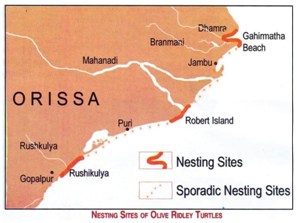

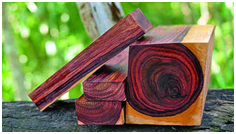 subcontinent. It is grown across the length and breadth of the sub-Himalayan region, extending from Assam in the east to River Indus.
subcontinent. It is grown across the length and breadth of the sub-Himalayan region, extending from Assam in the east to River Indus.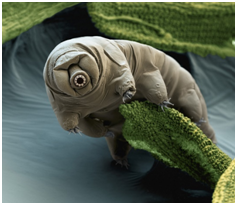 including those that are capable of wiping out the majority of known species. Various species of tardigrades are found across diverse terrains, from mountains to oceans to ice sheets. Due to their adaptability, opportunities exist outside tardigrades’ natural habitats.
including those that are capable of wiping out the majority of known species. Various species of tardigrades are found across diverse terrains, from mountains to oceans to ice sheets. Due to their adaptability, opportunities exist outside tardigrades’ natural habitats.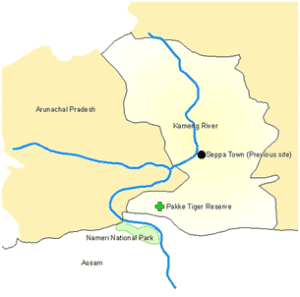 receive a share of 83 MW power. In 2022-23, the state is likely to have a power surplus both in terms of peak demand and energy requirements on yearly basis for the year 2022-23. The yearly demand for power in Arunachal Pradesh is 851 million units. The state will have 1,373 million units available. This creates a surplus of 521 million units.
receive a share of 83 MW power. In 2022-23, the state is likely to have a power surplus both in terms of peak demand and energy requirements on yearly basis for the year 2022-23. The yearly demand for power in Arunachal Pradesh is 851 million units. The state will have 1,373 million units available. This creates a surplus of 521 million units.